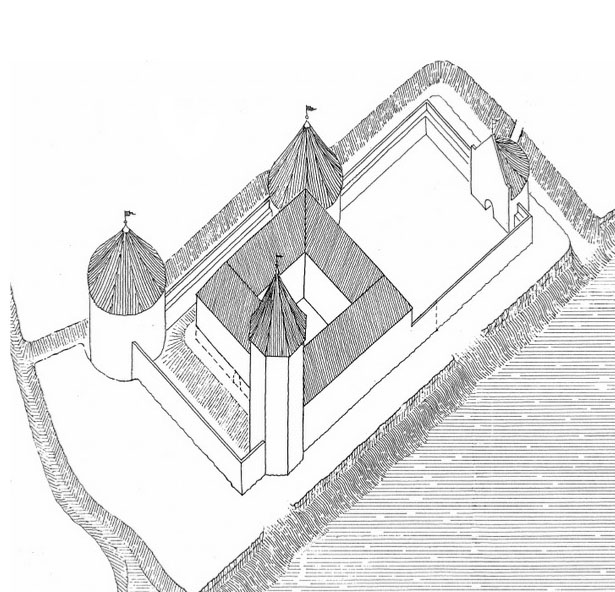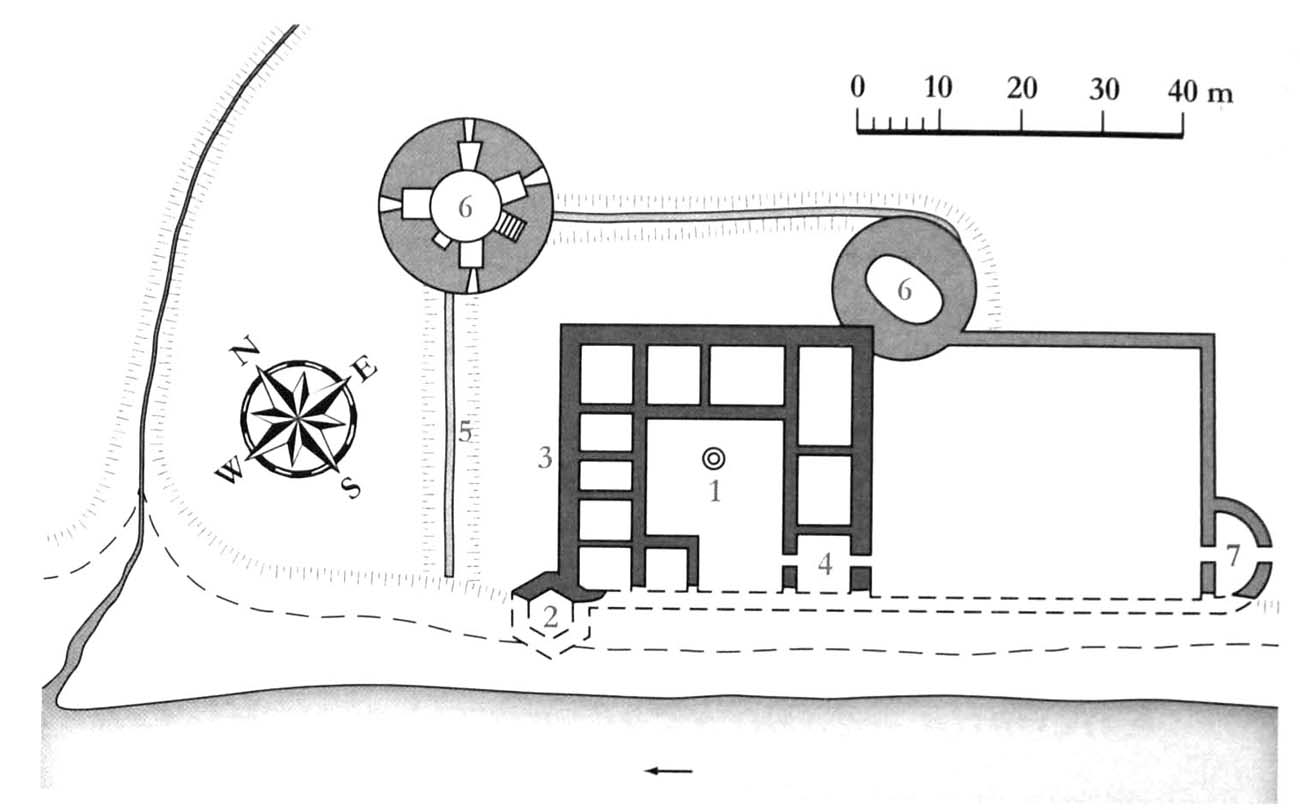History
In the vicinity of Salaspils in the XII century missionary of Livonia Saint Meinhard erected Holme Castle for converted local people. In the 13th century, several small fortified buildings were erected along the Daugava River, most of which, like Holme, belonged to the Riga archbishops or to the Riga cathedral chapter. The Church control over this strategically important fragment of the Daugava River did not last long, however, as at the end of the 13th century, during the armed conflict with the Teutonic Knights, the order took over the area and destroyed ecclesiastical possessions, including Holme. The dispute over the areas around Daugava, south of Riga lasted for most of the fourteenth century, but over the years the position of the Order was getting stronger, and in the second half of the fourteenth century Teutonic Knights built their own Kircholm Castle on the right bank.
The Teutonic castle of Kircholm first appeared in written sources in 1380. Probably from the first quarter of the 15th century the teutonic vogts resided in it, so the building was one of the tools of control and the political and military pressure of the Teutonic Knights on the Archbishop of Riga and Riga itself. This can be demonstrated, among others, by the agreement concluded in Kircholm in 1452, significantly limiting Riga’s independence from both the Teutonic Order and the archbishopric. Both rulers reserved in it the right to approve the vogts and town resolutions and obtained the status of an appeal instance against the verdicts of the vogts. In addition, the Teutonic commander of Riga received the right to sit in the city council and had half of the proceeds from court penalties. Despite this, neither the Teutonic Order nor the Archbishops of Riga ever managed to fully subordinate Riga.
Disputes and armed conflicts with the townspeople of Riga did not lead to the destruction of the castle, which survived until the secularization of the Livonian branch of the Teutonic Order, after which it was temporarily occupied by the Polish-Lithuanian army. In 1577, Kircholm was blew up by the troops defending Riga to prevent the Moscow troops of Ivan the Terrible from using the castle as a base against the city. Since then, it has remained in ruins.
Architecture
Situated on the northern bank of the Daugava River, the castle had probably a regular, almost square plan. The defensive wall circuit marked an internal courtyard measuring approximately 40 x 30 meters, occupied from the east, west and north by buildings attached to the walls. From the river side (south) there was only one smaller building or the annex next to the west wing. From the land side, the castle was surrounded by external wood and earth fortifications with a moat.
The main element of Kircholm Castle was an octagonal tower located in the western corner, protruding significantly in front of the perimeter of the defensive walls, touching the adjacent wing with only one of the eight walls. The gate was probably located halfway along the north-west wing, so the tower protected the entrance to the courtyard, controlled traffic on the river and secured the moat in the foreground of the castle. Presumably, it was not intended for residential purposes, but at most it could have been a place of final shelter in case the courtyard and surrounding buildings were captured.
In the 15th and in the first quarter of the 16th century, the castle was expanded with a new external defensive wall, which replaced the older wood and earth fortifications. It was extended much further into the foreground, due to the development of firearms, and reinforced with two massive cylindrical cannon towers in the northern and eastern corners. On the western, northern and north-eastern sides it formed a zwinger, on one side closed with an octagonal main tower, on the other with a late medieval cannon tower. The main gate was then moved to the south-eastern side, where a four-sided outer bailey was located. The entrance to its area was protected by a semi-circular bastion.
The castle has not survived to modern times. Even in the twentieth century, small fragments of walls, several meters high, were visible, but due to the construction of a dam on the river in the 1970s by the Soviet authorities, a significant part of the area along the Daugava River along with the remains of the castle was flooded.
bibliography:
Borowski T, Miasta, zamki i klasztory, Inflanty, Warszawa 2010.
Herrmann C., Burgen in Livland, Petersberg 2023.
Ose I., The Livonian War (1558–1583) and the Ruination of Castles, in Particular Kirchholm and Wenden [in:] Castles at War, Bonn 2015.
Tuulse A., Die Burgen in Estland und Lettland, Dorpat 1942.


